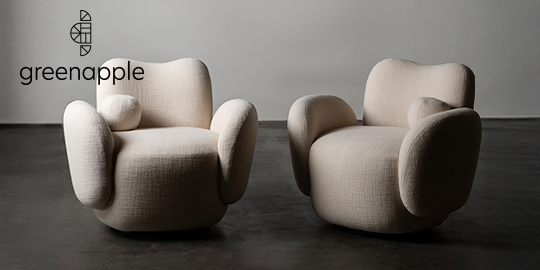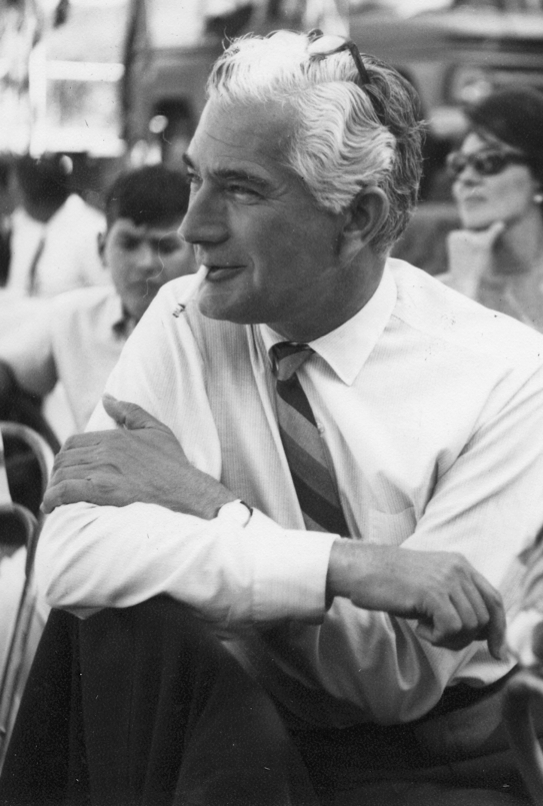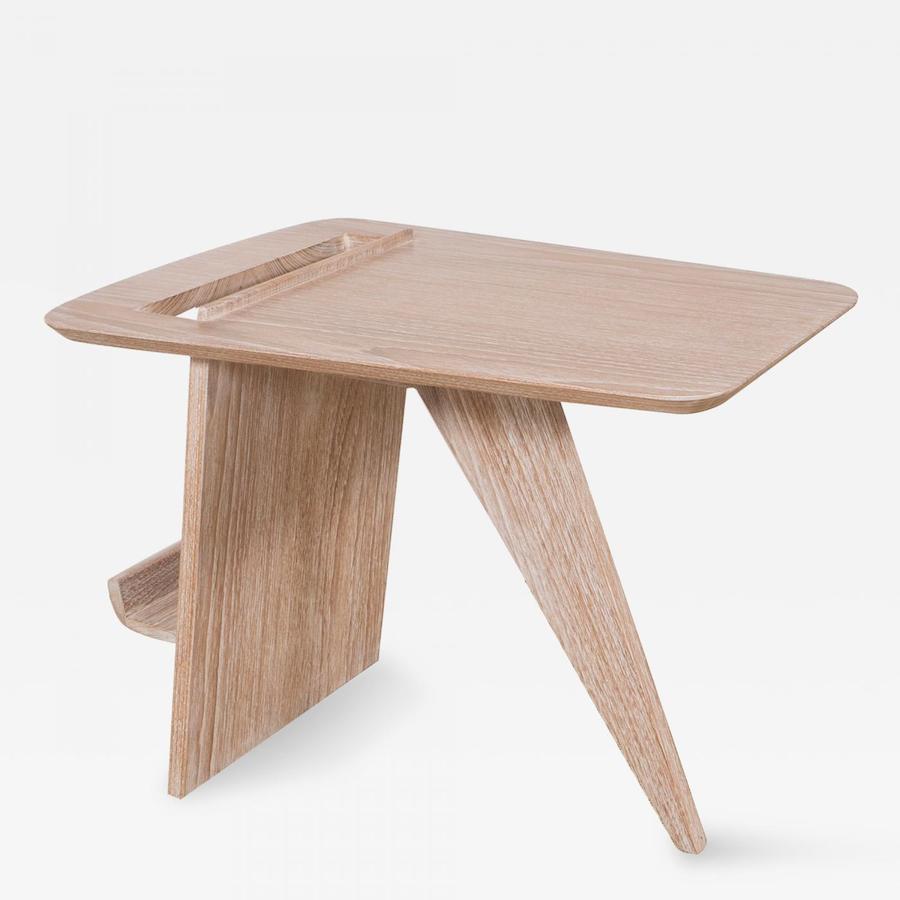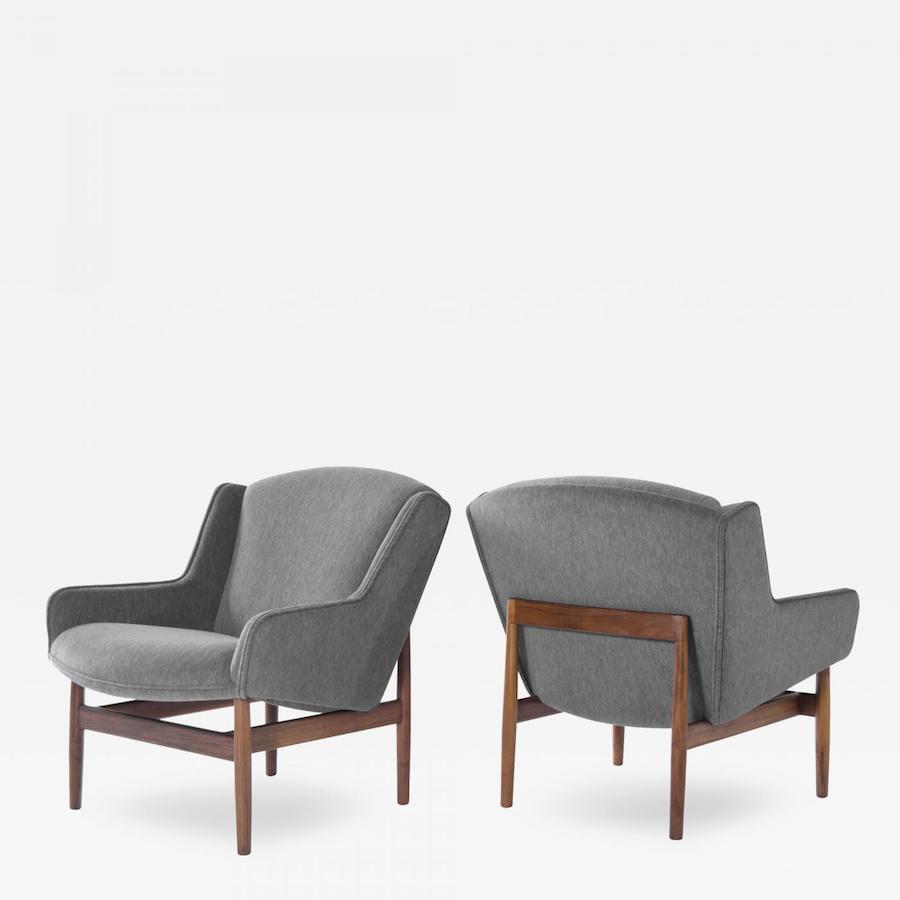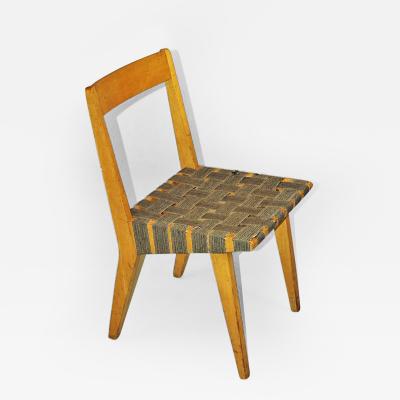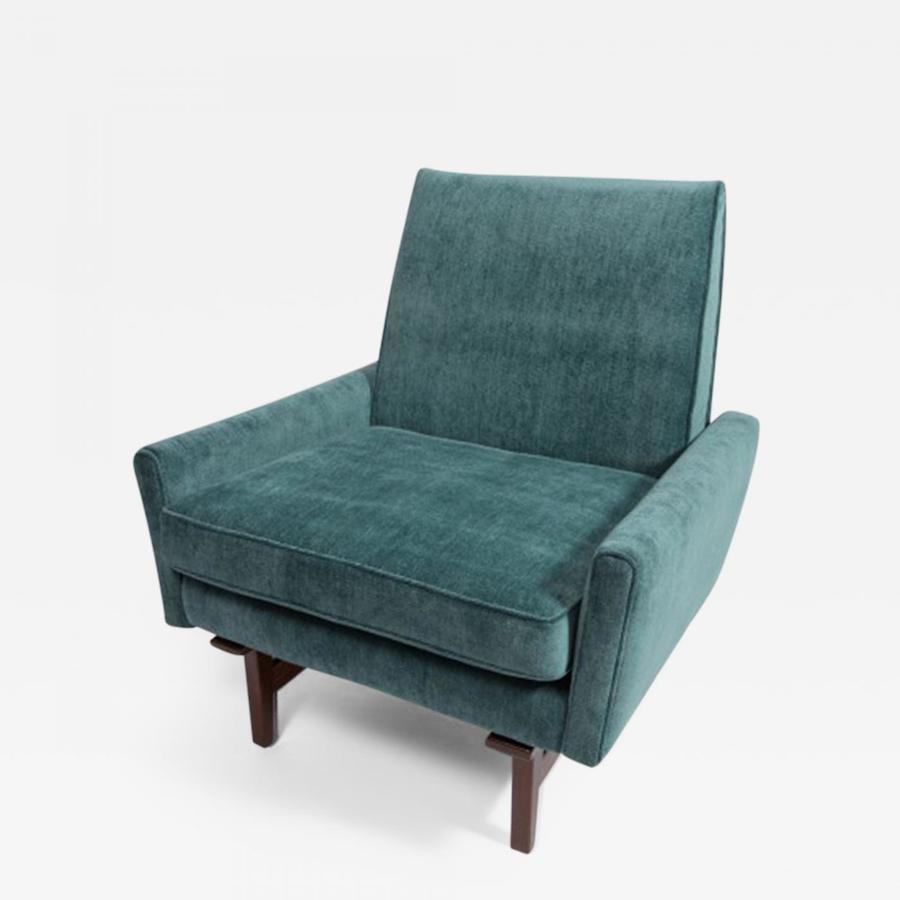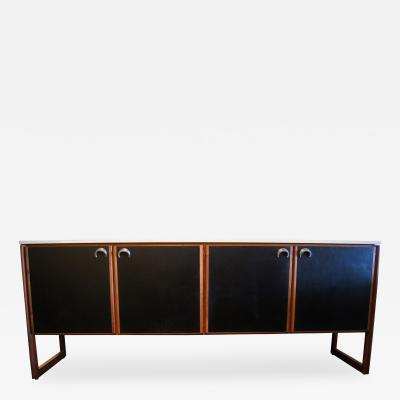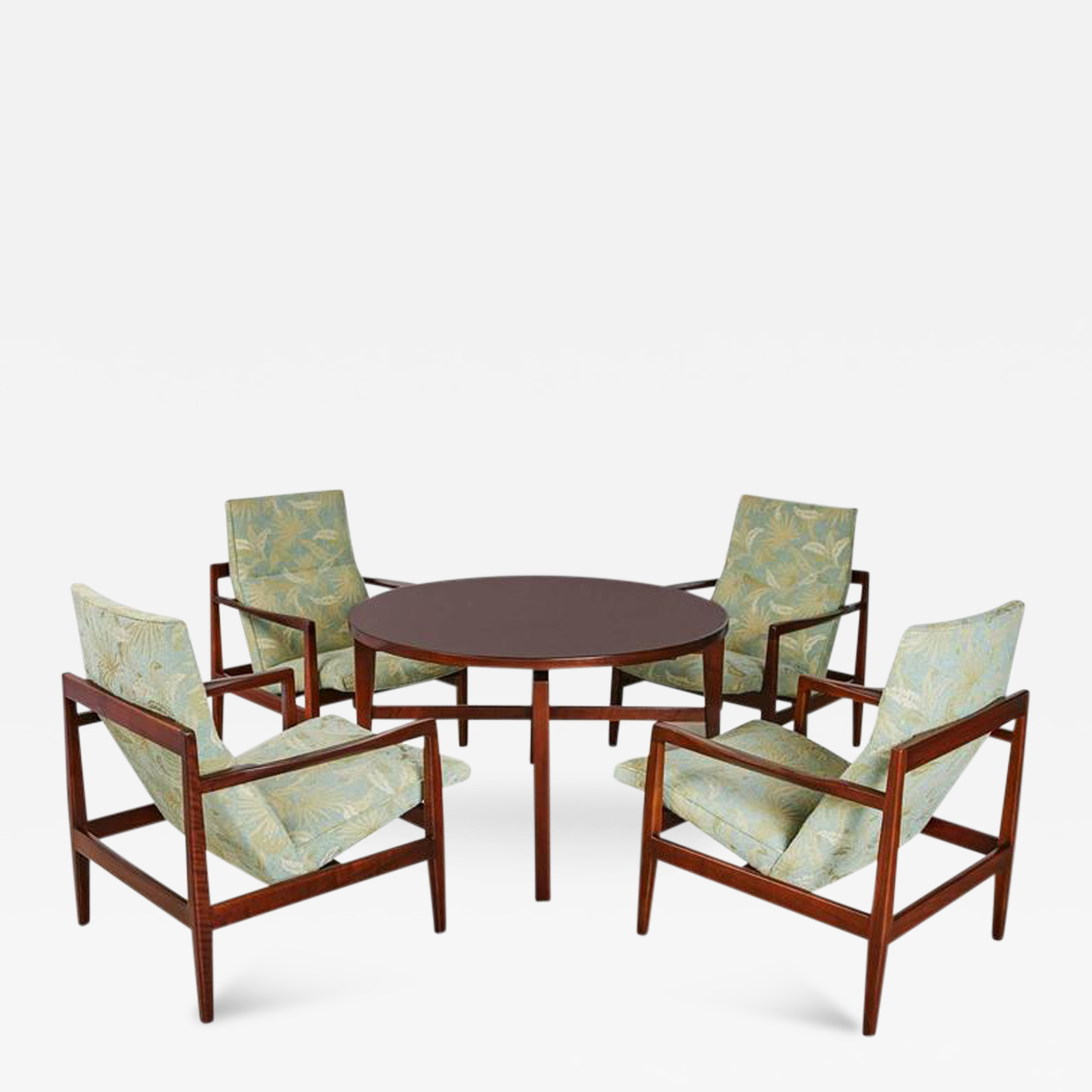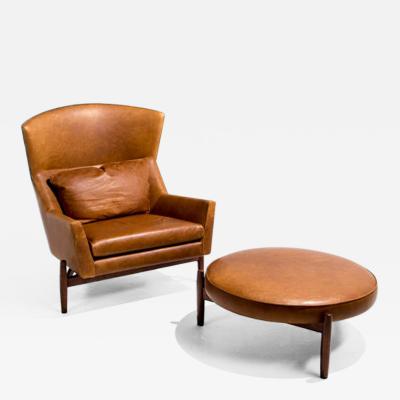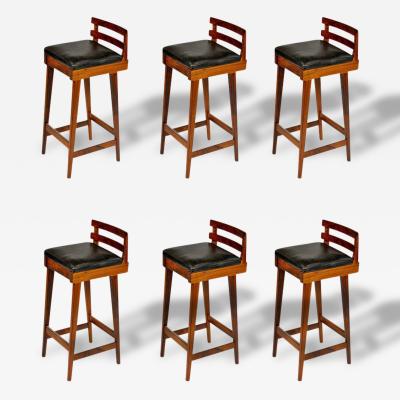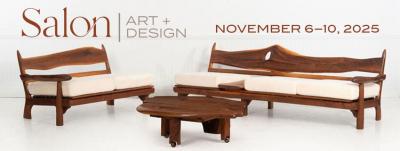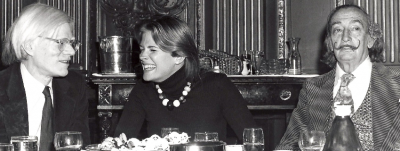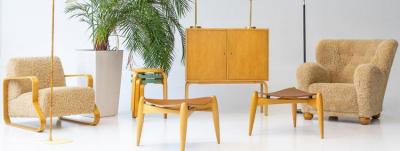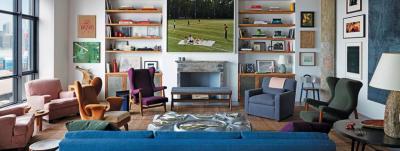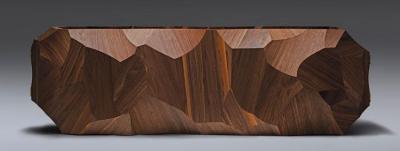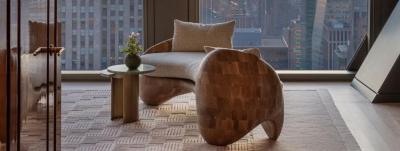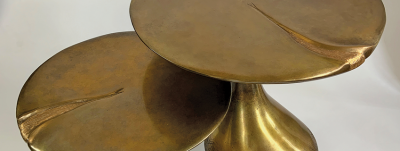Midcentury Modern Design Masters: Jens Risom
Jens Risom, a pioneering mid-century modern designer considered by many to be the first to bring Scandinavian design to the United States is known for his elegant yet functional furniture for both residential and commercial spaces. Risom believed that furniture should not be designed and created solely for visual appearance, but should be used, enjoyed, and respected.
Risom was born in Copenhagen, Denmark, in 1916. Son of an award-winning architect who encouraged his son to pursue an education in business and contemporary design, it seems as though Risom was genetically predisposed with an affinity for design. While a student at the Copenhagen School of Industrial Arts and Design, Risom trained under Kaare Klint, the famed furniture maker, and Ole Wanscher; Hans Wegner and Børge Mogensen were among his fellow peers. It was here where Risom learned the value of simplicity and utility in furniture design.
|
|
After studying at the Niels Brock Copenhagen Business College he worked briefly for Danish architect Ernst Kuhn. Risom also worked for a small design studio in Stockholm that specialized in residential furniture. During his time in Sweden, he was exposed to the work of Bruno Mathsson and Alvar Aalto, who would inform and inspire his own future designs. After a chance meeting with the American Ambassador to Denmark, Risom decided to move to the United States in 1939 to further his education in the field of modern furniture design. Working as a freelancer, his projects included designing textiles, furniture, and drafting plans for Georg Jensen’s New York furniture department. In 1941, he met Hans Knoll. Risom’s skills complemented Knoll’s, and when the latter founded his Hans Knoll Furniture Company, Risom designed 15 out of the first 20 pieces of furniture in the “600” line.
|
|
Like many of his age, Risom’s career was interrupted after being drafted in the U.S. Army in 1943. After serving in France and Germany until the end of World War II, he returned to New York and decided to found his own design firm. Jens Risom Design launched on May 1st, 1946, and eventually became the third largest furniture company in America. His design firm was hugely successful as one of the few companies specializing in high quality modern furniture. While his main competitor, former collaborator Knoll, relied on a variety of designers, Risom was the sole creative spirit within his firm. Knoll continued to produce furniture Risom had designed, removing his name from their products in the early 1950s.
Around this time, Risom launched a bold new advertising campaign aimed toward the broader American public. The photographs, shot by Richard Avedon, were simple and direct with stark white backgrounds. This bold attitude was reflective of Risom’s own outspoken personality, reflected in his company’s tagline “The Answer is Risom.” The response to this new campaign was so overwhelming that Jens Risom Design quickly expanded its manufacturing facilities. New showrooms were opened across the United States and overseas. In response to demand, the design studio began shifting toward the production of non-residential furniture, finding continued success producing furniture for office management, hospitals, and libraries. After running his own firm for 25 years, Jens Risom sold JRD to Dictaphone in 1970. Shortly after, the president of Dictaphone passed away and the company changed direction under new management. A series of missteps led to the unfortunate demise of Jens Risom Design. Meanwhile, in 1973, Risom directed his focus once again to freelance work, offering design services through his Design Control, based in New Canaan, Connecticut. Here he continued to create iconic furniture until his passing.
|
|
One of Risom's best known designs is the 1943 pared-down sculptural lounge chair, originally manufactured by Hans Knoll. Its curved frame was made from cedar, held together by the signature element: surplus nylon straps rejected by a parachute producer. His experimentation with these straps resulted in an immediately recognizable design that became a symbol of the times, as World War II had led to serious material shortages. Other iconic designs include his Executive Office Chair, one of which occupied the Oval Office under Lyndon B. Johnson, the T.710 Small Side Table, which played with negative space, the U-150 Sofa, the U-251 Settees or Loveseats, and of course, his many variations of lounge chairs.
Jens Risom’s designs from the 1940s and 1950s were so popular that a selection of them was reissued by Knoll in 1994. Stamford Modern explained why they are drawn to Jens Risom noting, "For Stamford Modern it is very important to highlight the master behind the designer, the talent that became an icon with each of his pieces, and that is Jens Risom."
|
|
Risom continued to design throughout his entire life. Just last year, he collaborated with designer Chris Hardy for a line of cabinets for Design Within Reach—the Ven Storage Collection—when he was no less than 99 years old.
Designs by Jens Risom reside in the permanent collections of many major museums, including the Museum of Modern Art in New York, the Brooklyn Museum, the Yale University Art Gallery, and The RISD Museum in Providence—the latter two are among Incollect’s top university art museums in the US. A long-standing trustee of RISD, Jens Risom received an Honorary Doctorate of Fine Arts in 2004. Other honors include his knighthood in 1996 by Queen Margrethe of Denmark with the prestigious Danish Knight’s Cross.
|
|
Throughout his life, Risom’s designs embodied the Danish modernism ideals of warmth, beauty, and simplicity, as seen in the Rocket/Benchmark collection offered by Rocket Gallery in London. Of his recent passing, Rocket Gallery owner, Jonathan Stephenson, notes, “It is certainly the end of an era. Jens was a rare person, a superb designer who firmly believed in good design & functionality, over and above fashion and lifestyle. But he was also that rare mix of a creative designer who was also a first-class businessman. It was a privilege to have known him.” Jens Risom will always be remembered as a legend of mid-century modern design who helped define the modern aesthetic that became synonymous with the 20th century.
Sources:





